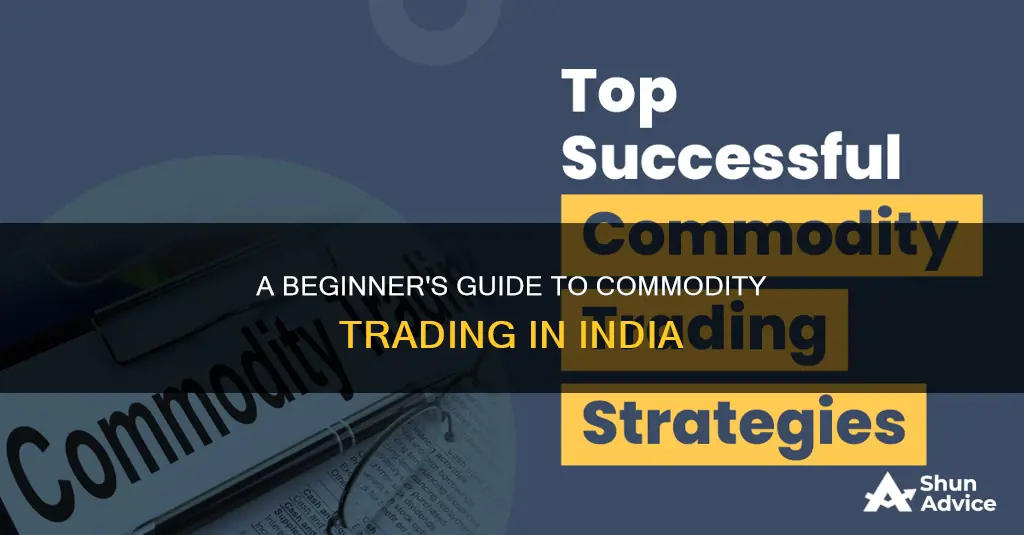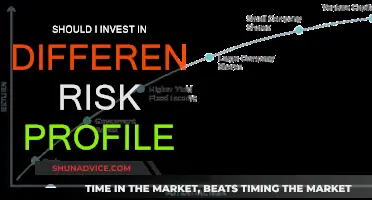
Commodity trading in India can be a lucrative investment option, especially for those looking to diversify their portfolios. Commodities are raw materials used to produce goods for everyday use, such as oil, sugar, and metals. The price of a commodity depends on the basic economic principles of demand and supply, but can also be influenced by factors like government policies, cost of production, and geopolitical situations. In India, commodities are traded on exchanges such as the Multi Commodity Exchange (MCX) and the National Commodity and Derivatives Exchange (NCDEX). To start trading, investors need to open a Demat account, which functions as a holding account for all investments, and a trading account, which is linked to the Demat account and used to execute trades. The next step is to choose a broker, either full-service or discount, who will facilitate the trades. Once the accounts are set up and the broker selected, investors need to make an initial deposit, which is typically around 5-10% of the contract value of the commodity they wish to trade. It is important to note that commodity trading can be risky due to the volatile nature of commodity prices, and it is crucial to have a solid understanding of the market and one's risk appetite before investing.
| Characteristics | Values |
|---|---|
| Types of commodities | Hard commodities (metals and minerals) and soft commodities (agricultural products) |
| Examples of commodities | Gold, silver, platinum, palladium, copper, zinc, aluminium, nickel, grains, pulses, crude oil, natural gas, etc. |
| Types of commodity trading | Physical trading, commodity stocks, commodity ETFs and ETNs, managed futures and commodity pools |
| How to start commodity trading | Open a Demat account, deposit an initial amount, understand the market, select a broker, open a trading account, make the initial deposit, create a trading plan |
| Advantages of commodity trading | Diversification, hedge against inflation and geopolitical risks |
What You'll Learn

Understanding the market and selecting a broker
Understanding the Market
Commodity trading involves buying and selling commodities based on price changes. Before investing, it is necessary to understand the basics of the commodity trading market. Commodities are the raw materials used to make refined goods and have their own intrinsic value. Traders buy and sell commodities such as metals, agricultural goods, and petroleum on commodity exchanges.
There are two types of commodities: hard and soft. Hard commodities are used as inputs to make other goods and provide services, while soft commodities are mainly used for initial consumption. Examples of hard commodities include metals and minerals, whereas soft commodities include agricultural products like rice and wheat.
Commodities can be further classified as:
- Agriculture: grains and pulses such as corn, rice, wheat, etc.
- Precious metals: gold, palladium, silver, and platinum, etc.
- Energy: crude oil, Brent Crude, renewable energy, etc.
- Metals and minerals: aluminium, iron ore, soda ash, etc.
- Services: energy services, mining services, etc.
Commodity trading may entail physical trades, but it generally takes place in the form of futures contracts. Futures contracts are agreements to buy or sell a certain commodity for a particular price at a predetermined date. If the price indicates an upward movement, traders buy futures, and if it indicates a downward movement, they sell futures.
Selecting a Broker
Selecting an efficient and reliable broker is crucial as they will conduct all trading on your behalf. Choose a broker based on their experience, rates, trading suite, and range of services. If you are a new trader, select a full-service broker who will make trading recommendations to help you make informed decisions. Brokers are classified into two categories: full-service brokers and discount brokers. Full-service brokers have many physical branches across the country and often charge higher fees. Discount brokers operate mainly online and usually charge lower fees.
Before selecting a broker, evaluate the costs and services offered. Read reviews about the broker to make an informed decision. To commence trading, you will need to activate a commodity trading account with a broker. The account may be opened online or offline, and you will need to submit basic documentation such as an application form, KYC documents, bank details, and income proof.
Investment Surpassing Savings: A Recipe for Economic Growth or Debt?
You may want to see also

Opening a Demat and trading account
To open a Demat and trading account, you will need to submit the following documents:
- PAN card
- Aadhar card
- Age proof
- Income proof
- Bank account statement
- Photo
- Cancelled cheque
- Address proof (Aadhar card, driving licence, voter ID, passport, etc.)
- Bank account statements of the last 6 months, 3 months' salary slips or ITR
- Photo of your signature on a white paper (the signature must match the one on your PAN card)
- One passport-size photograph
The process of opening a Demat and trading account is typically completed within 2 to 5 working days.
It is important to note that Demat and trading accounts are mandatory for trading in the commodity market. These accounts allow you to hold and manage your investments in a digital format, eliminating the need for physical share certificates. They also provide enhanced security and reduce the risks associated with the loss, theft, or damage of paper certificates.
Savings or Investing: Where Should Your Money Go?
You may want to see also

Making the initial deposit
Once you have opened a demat and trading account, you will need to make an initial deposit. The deposit amount is generally between 5% and 10% of the contract value, depending on the commodity you are trading. For example, if the margin money for trading a commodity is ₹40,000, you need to make a deposit of ₹4,000 plus the maintenance margin. The maintenance margin is essential to compensate for any losses should the market go against the perceived direction.
You will find this information on the official website of the brokerage house. You will also need to maintain an adequate margin to cover any losses. It is important to devise a commodity trading plan that helps you better understand the markets and your risk appetite. Every trader is different in terms of risk preferences and cash flow, so you need to make a choice depending on your financial positioning.
Besides the maintenance margin, traders will need to maintain an initial margin to cover any losses during a trade. For instance, the initial margin requirement for gold is Rs 3200, which is 10% of the trading unit of gold.
The Next Steps
Once all the procedures are done, the final step is to set up a trading plan. Without a trading plan, it isn’t easy to sustain in the long run. Besides, the strategy of one trader might not work for another. Hence, you will need a plan that works for you.
Assessing Investment Portfolios: Strategies for Success
You may want to see also

Creating a trading plan
Commodity trading in India can be a challenging task for beginners and seasoned traders alike. It is considered one of the most developing forms of trading in the country, and many traders are investing in commodities after equity and real estate. Here are some steps to create a trading plan for commodity trading in India:
Step 1: Understand the Basics of Commodity Trading
Before starting to trade commodities, it is essential to understand the basics of commodity trading, including the types of commodities traded in India, such as gold, oil, metals, agricultural products, and more. It is also crucial to know the different ways to trade commodities, such as direct investment, buying stocks of companies related to the commodity, or investing in commodity ETFs and mutual funds.
Step 2: Define Your Goals and Trading Style
Commodity trading can be complex, so it is important to have a plan that lays out your strategies and goals. Define your objectives, such as trading for income, speculating on price movements, hedging physical holdings, or trading for capital gains. Assess your personality type and trading style. Are you comfortable taking risks? Do you prefer technical analysis or fundamental analysis? Do you want to be a day trader, swing trader, or long-term trader? Answering these questions will help you develop a plan that aligns with your goals and trading approach.
Step 3: Choose the Right Commodities and Trading Methods
Research and identify the commodities that fit your trading style and risk tolerance. Decide on the trading method that suits your needs. If you are an active trader who enjoys taking risks and placing frequent trades, day trading may be suitable. On the other hand, if you have more capital or prefer slower-paced trades with lower risk, investing in futures contracts could be a better option.
Step 4: Set Your Expectations and Timeline
Determine your expectations from commodity trading. How much money do you want to earn, and by when? What kind of trader do you aspire to be? Day traders typically hold positions for 30 minutes to three days, while swing traders hold positions for three days to six months. Long-term traders may hold positions for even longer periods. Setting clear expectations will help you stay focused and evaluate your progress.
Step 5: Choose a Reputable Commodity Broker
Selecting a reputable and efficient commodity broker is crucial. Look for a broker registered and regulated by the Securities and Exchange Board of India (SEBI). Compare their track records, fees, and the products they offer. Consider their brokerage fee, clearing fee, platform fee, commission, and other charges. Open a demo trading account with a few promising brokers to test their platforms and choose the one that suits your needs and provides valuable recommendations.
Step 6: Develop a Risk Management Strategy
A comprehensive risk management strategy is vital to the success of your commodity trading plan. Identify the risks inherent in commodity trading, such as liquidity risk, market risk, and transaction costs. Ensure you can meet margin calls and pay off debts to avoid potential bankruptcy. Understand the volatility of the commodities markets and the impact of interest rate changes on borrowing costs.
Step 7: Open a Commodity Trading Account
To start trading commodities, you need to set up a commodity trading account with a broker that offers commodity trading. Open an account, deposit funds, and you'll be ready to begin trading. Remember to choose a broker that aligns with the commodities you want to trade and your risk appetite.
Commodity trading in India offers both challenges and opportunities. By creating a well-thought-out trading plan, you can navigate the complexities of the market and work towards achieving your financial goals.
What Makes Investment Management a Front Office Career?
You may want to see also

Commodity trading strategies
Before investing in the commodity market, it is important to establish a strategy. However, it is worth noting that a strategy that works for one trader may not work for another. Therefore, it is essential to devise a plan that aligns with your knowledge, risk appetite, profit target, and type of commodity market in India. Here are some preliminary rules to help you establish a commodity trading strategy:
- Willingness to learn: Before stepping into any domain, it is vital to have a basic understanding of it. For commodity trading, you must understand commodity futures and options and how they trade, including support and resistance levels and margins.
- Insight on commodity frequency: Some commodities trade throughout the year, while others trade for specific months or depend on economic cycles. Each commodity contract has different tick values, referring to the financial results of the minimum unit price change.
- Understanding commodity attributes: Each underlying item has a set of specifications regarding seasonality, volumes, spread, open interest, and more, which affect their price. Usually, the exchanges offer extensive information on these aspects to help traders make informed choices.
- Discipline: Discipline is a prerequisite for becoming a successful trader. It is the ability to establish an investment plan and stick to it despite market fluctuations. It also means knowing your financial limits.
- Diversification: Never put all your eggs in one basket. Diversification is a fundamental principle of investing and helps to mitigate risks.
- Hedging: Commodity futures contracts serve as an excellent hedging tool for those traders, manufacturers, or service providers with exposure to the underlying commodities. For example, with a commodity futures contract, an airline can fix the price at which fuel will be purchased in the future, eliminating any volatility in future prices.
- Diversification: Commodities expose your portfolio to a different asset class and provide it with the balance it requires. A well-diversified portfolio is crucial to riding out market volatility.
- Long-term view: Commodities can be a long-term investment. For instance, gold is often seen as a safety hedge against volatile markets, with prices tending to appreciate during geopolitical uncertainty.
- Short-term speculation: Investors employing this strategy benefit from short-term changes in the price of the underlying commodity. Such trades are generally speculative in nature, and investors tend to square off their position before the expiry of the futures contract.
Understanding Investment Management Services: Strategies for Success
You may want to see also
Frequently asked questions
Commodities are basic raw materials used to produce goods for everyday use. They are the building blocks of a global economy and include items such as oil, sugar, metals, etc.
Commodities traded in India can be categorized into four broad categories: metals (such as copper, aluminium, zinc, and lead), agricultural goods (such as cotton, black pepper, rice, and wheat), precious metals (such as gold, silver, and platinum), and energy sources (such as crude oil and natural gas).
To start commodity trading in India, you need to open a Demat account with a broker. You will also need a trading account that is linked to your Demat account. Then, you can use the Demat account through your broker to invest in commodities at any commodities exchange.
First, pick a commodity broker that suits your needs. Then, open a Demat and trading account. Finally, make the initial deposit, which is typically about 5-10% of the contract value of the commodity you wish to trade.
Commodities can provide good returns in the long run due to their changing prices over time. They also offer diversification to your portfolio and act as a hedge against inflation and geopolitical risks.







